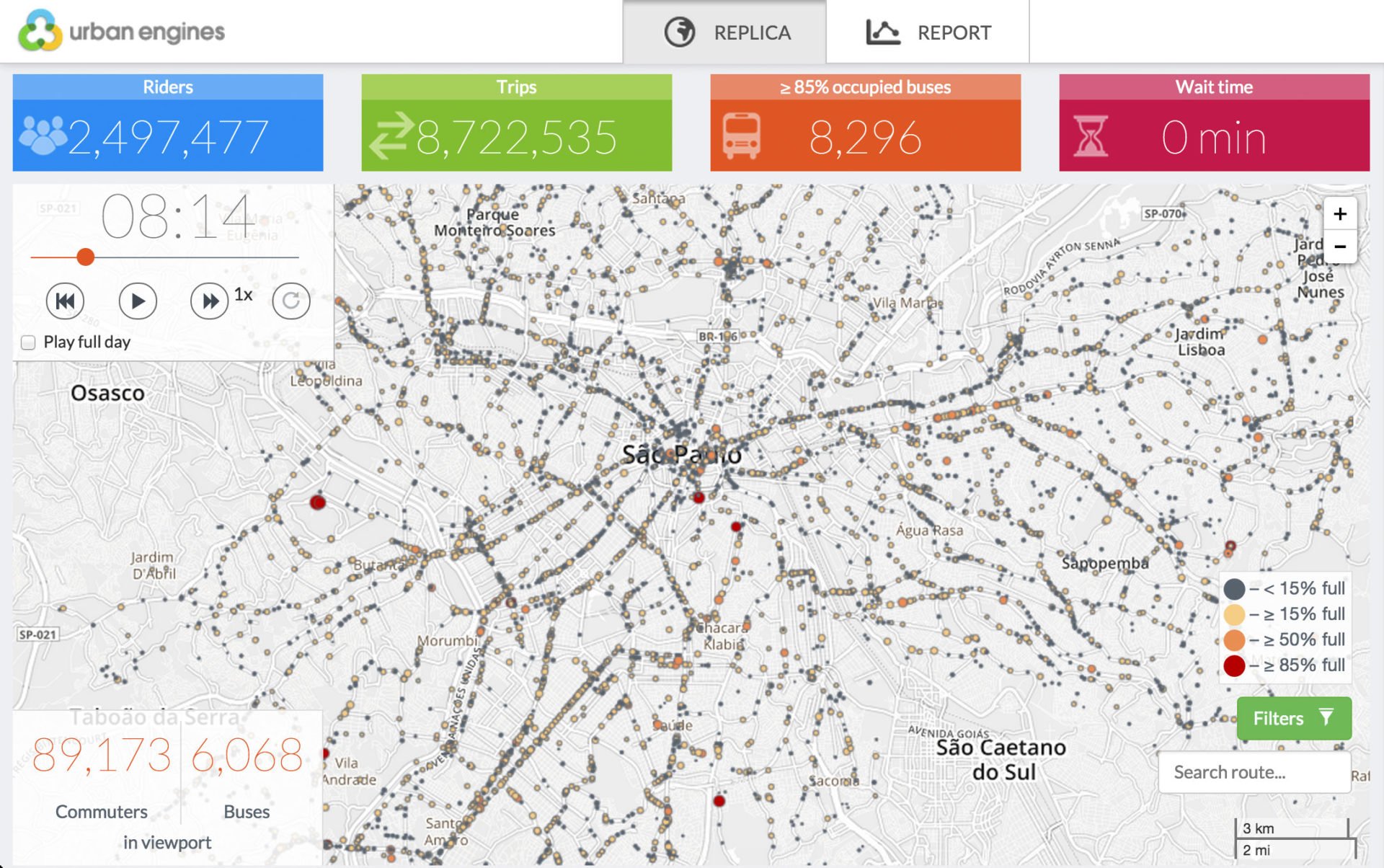
In 2010, for the first time in human history, more than half the world’s population was living in cities. According to the WHO, urbanization will continue, and by 2030 over five billion people will be living in cities—stuck in traffic jams or packed like sardines into crowded commuter trains and buses, unless we do something about it.
Congested transport networks are a big economic burden, not just a frustration for city-dwellers. The annual “cost of congestion” in the U.S., measured by the excess time and fuel incurred due to traffic delays, exceeds $120 billion annually, and is projected to approach $200 billion by 2020.When pollution, accidents, and the effects on commerce are taken into account, the cost is even higher. The impact on businesses that make extensive use of roads, like delivery for online retail systems (e.g., Amazon, Alibaba), the “on-demand economy” (pick me up now; deliver this right away), and moving and shipping is also staggering. The situation with public transport is not much better: in cities where public transport has been widely adopted it faces severe rush-hour crowding, meaning that drivers are not inclined to shift off the roads. Traffic jams are no longer restricted to a couple of hours each day or to small pockets of space: a monster jam formed in China in August 2010, stretching over 100km out of Beijing and lasting over nine days.

How can technology help save us from congestion collapse?
At Urban Engines, we believe the most important technology for the future of cities will be data, powered by three revolutions: an Internet of Moving Things, public cloud computing infrastructure, and powerful computers in the smartphones we carry in our pockets. With better data, passengers and drivers will find better routes, waste less time at bus stops, or connect to app-based ridesharing and carpooling communities like Uber and Lyft. With better data, the next generation of smart logistics can organize more efficient delivery, for example joining up taxi and delivery fleets. With better data, city transit operators and planners can learn where congestion hotspots are, why they happen, and how to prevent them. Importantly, with real-time data from roads, buses, and trains, commuters can find the fastest way to get from point A to point B using tools like our Urban Engines app. Data is the key that allows us to quickly build a “software and mobile overlay” on top of the hardware of roads, train tracks, cars, buses, and trucks.
Some of the data is here already: GPS data from buses, data from commuter fare cards, RFID scans of cars passing through tollways. Additional data comes from smartphones with their location sensors. The nascent “Internet of Moving Things,” i.e. the myriad wireless sensors on goods and vehicles, will produce even richer data.
We have been working on a data processing system called the “space-time engine.” The core of the engine is a system we call the “digital replica,” which ingests data from millions of moving objects. It then stitches together these snapshots, like a giant jigsaw puzzle with missing pieces, and reconstructs exactly what is most likely to have happened: how crowded each train platform was, when a bus left its station, what routes were chosen, the flow on each road segment. In addition, the space-time engine:

(1) heals glitches in the data, which is always a problem with real-world sensors
(2) extracts patterns, both systematic and one-time
(3) produces intuitive visualizations using an interactive interface
(4) makes all of this processed data queryable, and mashable with other datasets like calendars of sports events or weather logs.
The engine is scalable and full-detailed, and we believe it is the fastest engine for analyzing data from “things that move” in urban environments.
The Urban Engines mobile app uses the computing power and storage in smartphones to put the power of the space-time engine in our pockets. Thus, the app does not rely on the map and algorithms running on powerful computers in the cloud, as do most leading mapping solutions. Instead, the space-time engine runs completely offline on your phone to provide mapping, routing, and searching functions. This is critical for anyone using underground subways or anyone who simply wants to avoid costly data roaming charges.
So, while urbanization may be severely affecting people and businesses by choking transportation networks, the clever use of data can unclog our cities. Powerful technological tools—from the Internet of Moving Things to the computational and sensing capabilities of smartphones—can get us the data and the processing power whenever and wherever we need them to fix congestion.
Balaji Prabhakar is Chief Scientist and Co-Founder of Urban Engines, as well as a Professor of Electrical Engineering and Computer Science at Stanford University, and the Director of the Stanford Center for Societal Networks.














